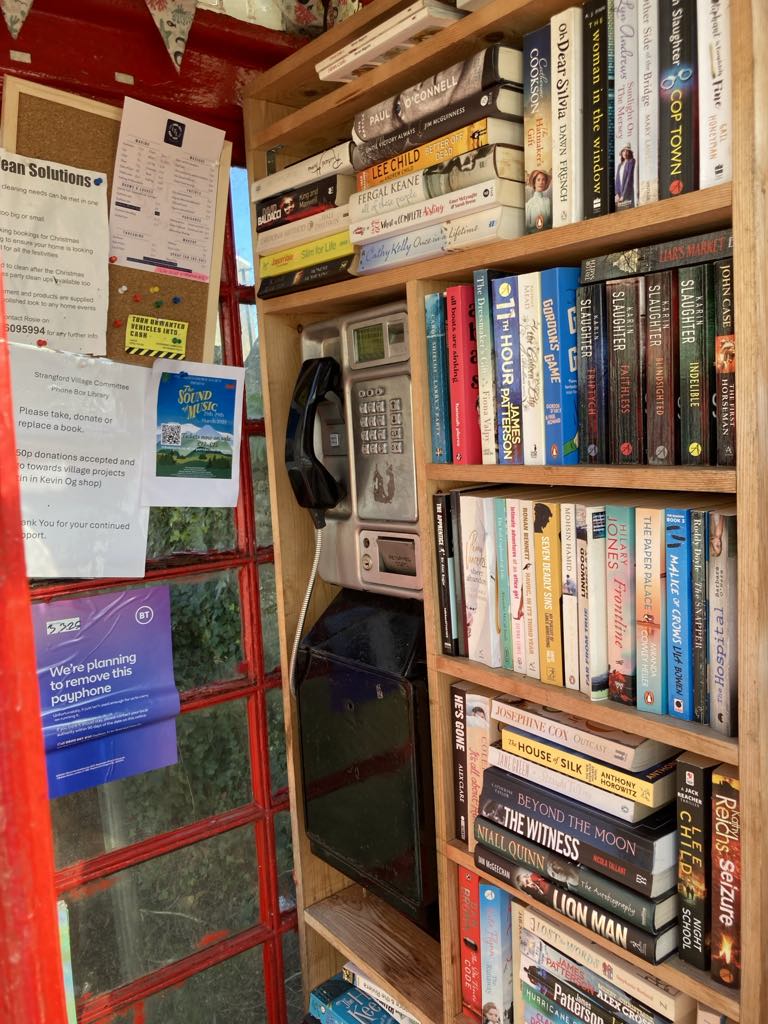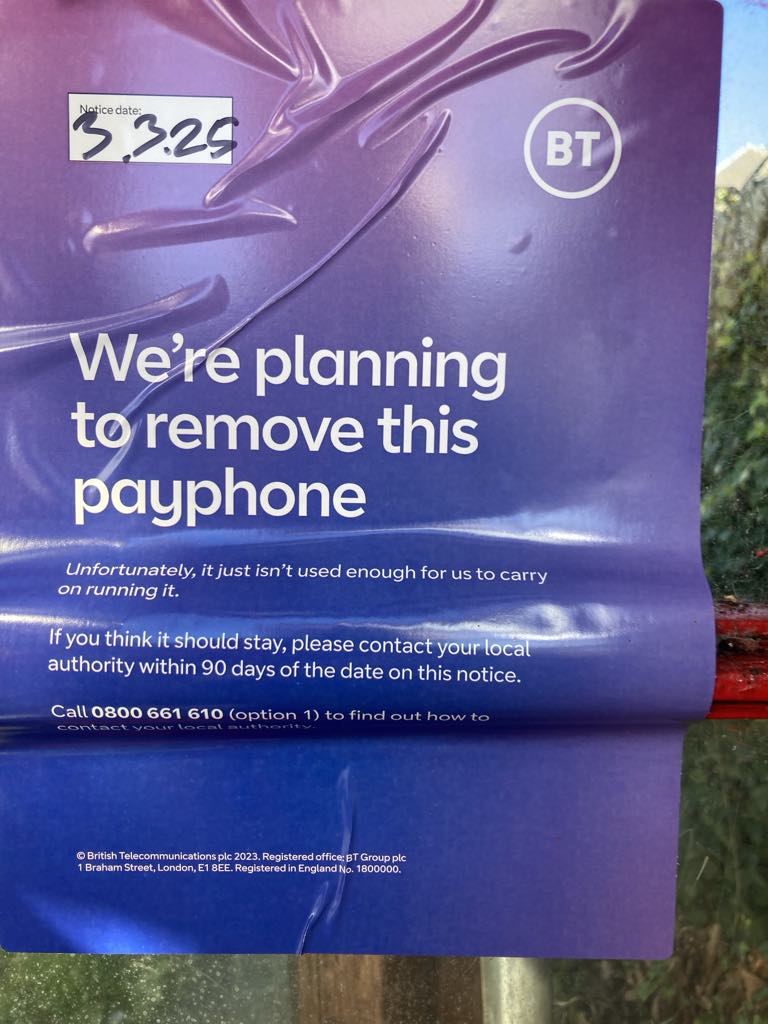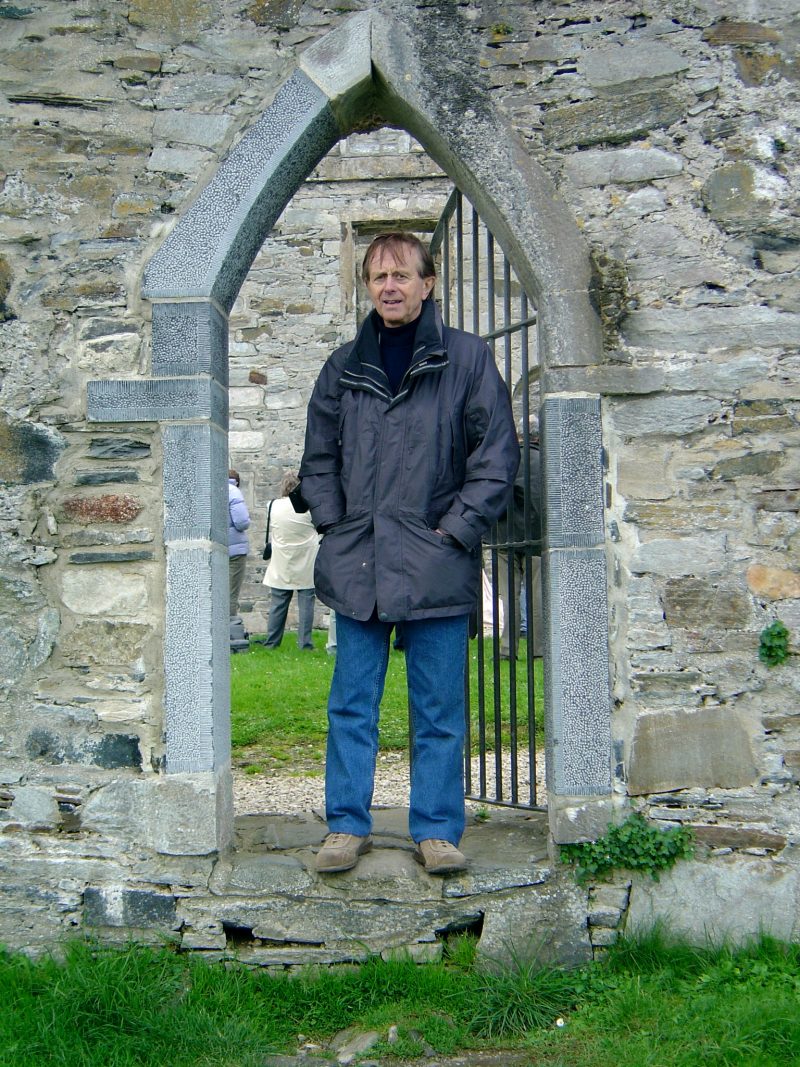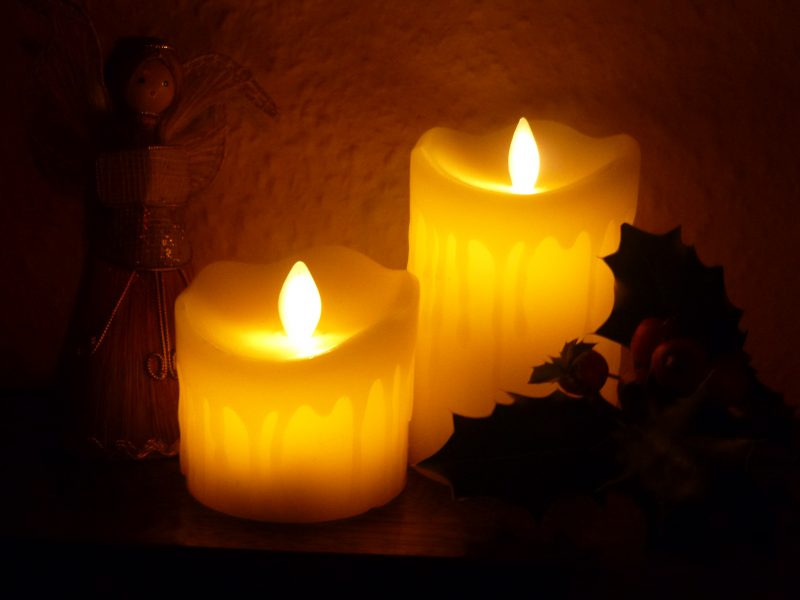

I can’t understand the logic behind BT and their threat to remove the innards of a perfectly delightful red telephone phone box in Strangford village. I know this phone, I’ve even used it, it’s outside my friend’s house, however next time I’m in the area I’ll probably bring a book and borrow a book as this red beauty is now a mini library, as well as a working phone – at the moment. What better way to keep this little piece of history alive.
“The library is used on a daily basis between locals and guests to the village,” says my friend and she adds: “The phone itself is important, no one’s mobiles were working during the storm and it was the only phone for people to access”.
This seems to be a national threat and the word is getting out, if you were watching EastEnders on Tuesday you’ll have spotted the sign stuck on the red framed phone box windows which read Walford Community Library and we had a glimpse of books and magazines inside! Other uses include an area to hang local art work and best of all Girl Guides in Scotland put forward the idea to use them to house defibrillators. By the way, I understand that, If being stored internally there is a battery which lasts three or four years, if an outside wall it comes with a cabinet which needs to be connected to a power source but you can still take the defibrillator to the patient where ever that may be – depending on the distance. There are plenty of words of advice on the Internet.

An Asset For Young And Old
When I was growing up we had a telephone box down the road, a K6 design in ‘current red’ before the paint shade was changed and ‘cherry red’ came into vogue in 1968, Not only was it used to ring friends and family, for young teenagers it was also a meeting place and a lot of fun. We used to tap out the numbers on the bar above the dial and that got us through to boy friends for free. If they were engaged we’d dial the number all but the last digit, hit it after a 30 seconds or so and that meant we became first in the queue, if only you could do that today to get through to surgeries and public bodies. To be truthful we sometimes just dialled random numbers and had mad conversations!
Interesting that, when men were away at the last war and women were on their own, it was the Women’s Institute who campaigned for a phone box in every village and, thoughtfully, a public loo in beauty spots.
How Things Have Changed
It’s estimated that 89% of 16 to 24 year olds have a sophisticate smart phone plus all the millions like me with a standard model, so I have to acknowledge that mobiles have put paid to the majority of public phones but I can’t understand the notice which claimed ‘We’re planning to remove this payphone. Unfortunately it just isn’t used enough for us to carry on running it. If you think it should stay please contact your local authority within 90 days of the date on this notice. Call 0800 661 610 option 1”. I did this and got a nice lady who looked up the situation and advised contacting the planning department at the council and, importantly, she said if enough people protest about loosing the telephone it will stay in place. I hope she meant it! Well, there’s plenty of time to mount a petition.

Sad as red phone boxes are being maintained all over the world from USA to Portugal, New Zealand and China, yet it seems a shadow hangs over Strangford and it’s sister close by in Downpatrick – surely it only takes one man to keep an eye on them both and collect the cash.
Talking to DUP Councillor Alan Lewis he knows of other such boxes and he’s supporting all locals who wish to retain the service. “There is civic pride in these boxes and you’ll find that it’s the locals who maintain and appreciate them, BT imply there’s little need for the phones now but how do they know when they have blocked calls except for emergency services. This organisation made £1.6 million profit last year and they say they can’t afford to maintain a vital service in Strangford and Newtownards. It’s all very well to talk about mobile phones taking over, there are many families where there’s no signal and some people who don’t own a mobile so the traditional telephone is vital. If they go ahead with their plans I will request the council adopts the box and so keep this traditional icon.”
It’s a question of ‘hang on the line’ and we’ll see.
Good Bye to a Special Man.

Since he died ten days ago, there have been many thoughtful words spoken by Stanley Matchett’s colleagues. He was the consummate professional, he took time to set up his subject but he was also adept at capturing the fleeting moment as he did with what has been called the iconic image of The Troubles. On Bloody Sunday, January 1972 he photographed Bishop Edward Daly coming out of the Bogside, bent over, waving his blood stained handkerchief escorting the fatally wounded Jackie Duddy as he was carried out of the battle ground. The photo circled the world, the impact was powerful.
I remember sitting with Bishop Daly in his home in Derry as he talked of that day, the fear, the tensions and mayhem and in the middle of it a brave photographer capturing an image which has lived on, and will live on, in history.
Stanley won many awards as a press photographer and was awarded an MBE for services to photography but there are many others who remember him not as a member of the press pack but as the man who took their hopes and dreams and turned them into pictures.
George Jones spoke to me from holidaying in Austria. “I am so sorry to hear of the death of my dear friend, I owe him a lot, he took the very first publicity photo of Clubsound long before the band was famous. He told us how to take photos and the importance of composition, he was the ultimate professional with a great eye for what we wanted, he captured the humour and had a sense of the music, Every time we brought out an album it was Stanley’s pic on the front. There won’t ever be another like him.”
Christine Courtney worked with Stanley when she was a pubic relations consultant. “He and his wife Mo were a twosome, they were fantastic, I would ring them and ask them what they thought the best approach would be for a publicity campaign and that was it, we were off! Stanley had a feeling for the story. Once when I was looking for an image for a volunteer organisation press handout, his suggestion was to get all the many volunteers involved and he got up on a roof and took a shot of them all looking up at the camera and it was one of the best PR pictures we ever got. He was responsible for many a front page. “ But Christine has another very precious memory. “They asked me to sing at their wedding in Donegal and it was my privilege.”
Four years ago Stanley took part in UTV’s programme Frontline. He chose to revisit Donegall Street in Belfast where seven people were killed at the height of The Troubles. It must have been difficult to him to relive the devastation, walking amongst the dead and the injured then through the smoke he remembers seeing a paratrooper comforting a girl who had been seriously hurt and again his picture of the man gently holding the injured girl made the news. He was moved by the image and so were thousands of others.
Although The Troubles were a major part of his portfolio, he loved fashion and Maureen Martin speaks of the days of the Ideal Home Exhibition in the Kings Hall when he photographed the models on and off the catwalk. “We respected him because he respected us, He became a great friend.”
That was Stanley Matchett, features or news he was caring and dedicated, an expert and a throughly charming man.
We offer his devoted wife Maureen and their family our sincerely sympathies and love.

HOPE YOU REMEMBERED TO PUT YOUR CLOCK FORWARD ONE HOUR!
